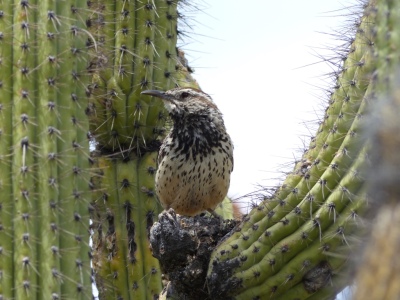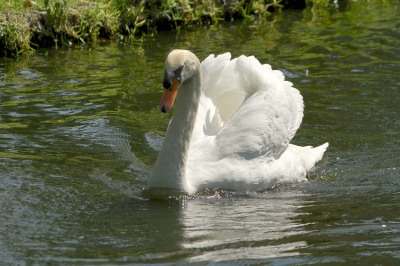On my last post, Our Loggerhead Shrike Again, I emphasized the Latin name for this bird. “In case you’re curious, the Latin name Lanius is Great Grey Shrike. The ludovicianus means “butcher” and laniare – “to tear to pieces.” They have been referred to at times a “butcher birds” because of what they do to their victims.”
While recently browsing through my many “dusty” bird books, I rediscovered my “Latin for Bird Lovers,” by Roger Lederer Carol Burr. It actually is quite interesting, even though I have never studied Latin or paid much attention to the scientific names of our beautiful birds we write about. We can all learn some new and interesting facts about these wonderful birds. Dr. Jim, (JJSJ) also agrees and is willing to adds some articles also. Maybe I can encourage some of our other contributors to join in.
As we all know, various birds migrate during parts of the year, and they do not have to carry passports or “flying licenses” to pass through different states or countries. Countries and even states have varying names for birds. Yet, we are all seeing the same avian wonder.
Bird names also change over time, yet the Latin name or scientific name doesn’t (normally). I’ll be using this book, Latin for Bird Lovers by Roger Lederer & Carol Burr as one of the sources for some upcoming articles.
Here are some examples of how bird names have changed over the years. Imagine how hard it is today for the international groups like the I.O.C.’s World Bird List to report on the same bird’s names from various languages if it wasn’t for these Latin names.
Here are some examples of re-named birds (not from Latin) just here in our part of the world:
- Common Loon — Great Northern Diver
- Horned Grebe — Hell-diver
- Double-crested Cormorant — Farallon Cormorant, White-tufted Cormorant, Shag
- American Bittern — Bog Pumper, Dunk-a-doo, Indian Hen
- Greater White-fronted Goose — Specklebelly
- Northern Pintail — Sprigtail
- American Wigeon — Baldpate
- Redhead — American Pochard
- Ring-necked Duck — Blackhead
- Scaups — Bluebill
- White-winged Scoter — Velvet Scoter
- Common Goldeneye — Cobhead, Whistler
- Goldeneyes — Garrot
- Bufflehead — Butterball, Spirit duck
- Hooded Merganser — Cock Robin
- Common Merganser — Goosander, American Sheldrake
- Ruddy Duck — Sleepy Duck
- Sharp-shinned Hawk — Little Blue Darter
- Cooper’s Hawk — Big Blue Darter
- Ferruginous Hawk — Rusty Squirrel Hawk
- Merlin — Pigeon Hawk
- Sage Grouse — Sage Cock
- Sora — Ortolan
- American Coot — Mudhen
- Black-bellied Plover — Bullhead
- Black-necked Stilt — Lawyer
- Greater Yellowlegs — Tell-tale
- Lesser Yellowlegs — Yellowshanks
- Marbled Godwit — Marlin
- Ruddy Turnstone — Calico-back
- Red Knot — Robin Snipe
- Least Sandpiper — Oxeye
- Dunlin — Purre, Black-breast
- Shortbilled Dowitcher — Brownback
- Common Nighthawk — Bull-bat
- Northern Flicker — Golden-winged Woodpecker, Yellowhammer
- Pileated Woodpecker — Log-cock, Black woodcock
- Bank Swallow — Sand Martin
- Black-capped Chickadee — Long-tailed Chickadee, Yukon Chickadee, Western Titmouse
- Mountain Chickadee — Bailey’s Chickadee
- Boreal Chickadee — Brown-capped Chickadee
- American Dipper — Water-ouzel
- Mountain Bluebird — Arctic Bluebird
- Townsend’s Solitaire — Townsend’s Ptilogonys
- Bohemian Waxwing — Bohemian Chatterer
- Cedar Waxwing — Cherry-bird
- Loggerhead Shrike, Northern Shrike — Butcher-bird
- Red-eyed Vireo — Greenlet
- Orange-crowned Warbler — Lutescent Warbler
- Yellow Warbler — Golden warbler, Mangrove Warbler
- Spotted Towhee — Chewink, Ground Robin
- Chipping Sparrow — Hairbird
- Vesper Sparrow — Bay-winged Bunting
- Dark-eyed Junco — Snowbird
- Snow Bunting — Snowflake
- Lark Bunting — White-shouldered Blackbird
- Bobolink — Reedbird
- Red-winged Blackbird — Bicolored blackbird, Red-and-buff-shouldered blackbird, Swamp Blackbird
- Common Grackle — Bronzed Crow Blackbird
- Brown-headed Cowbird — Cow Blackbird, Dwarf Cowbird
- Common Raven — Holarctic Raven
- Hoary Redpoll — Mealy Redpoll
Stay-tuned as I, and others present some of our amazing Avian Wonders from their Creator. We’ll group them by their Latin naming. Or, by the current Scientific names. One thing is for sure, when Adam named the birds, he did not use Latin to help him. He most likely had the best assistance from their Creator.
“So Adam gave names to all cattle, to the birds of the air, and to every beast of the field…” (Genesis 2:20 NKJV)







 Many creatures have been found that use sticks, leaves and other items as tools. Chimpanzee parents teach their youngsters to poke sticks in termite holes to get termites. However, no animal has shown an instinctive tendency to make and use tools, until now.
Many creatures have been found that use sticks, leaves and other items as tools. Chimpanzee parents teach their youngsters to poke sticks in termite holes to get termites. However, no animal has shown an instinctive tendency to make and use tools, until now. Have you ever noticed that we can usually sense whether an animal is hostile or friendly, simply by its sound? Did you ever wonder about the universal features that allow for important basic information to be shared between animals and humans?
Have you ever noticed that we can usually sense whether an animal is hostile or friendly, simply by its sound? Did you ever wonder about the universal features that allow for important basic information to be shared between animals and humans?
 The shy bird called Clark’s nutcracker collects food during the growing season and stores it for the cold winter months. In one year, a bird will store between 22,000 and 33,000 seeds in as many as 2,500 locations, which can be more than ten miles apart. But does the little bird remember where he put all those seeds?
The shy bird called Clark’s nutcracker collects food during the growing season and stores it for the cold winter months. In one year, a bird will store between 22,000 and 33,000 seeds in as many as 2,500 locations, which can be more than ten miles apart. But does the little bird remember where he put all those seeds?











